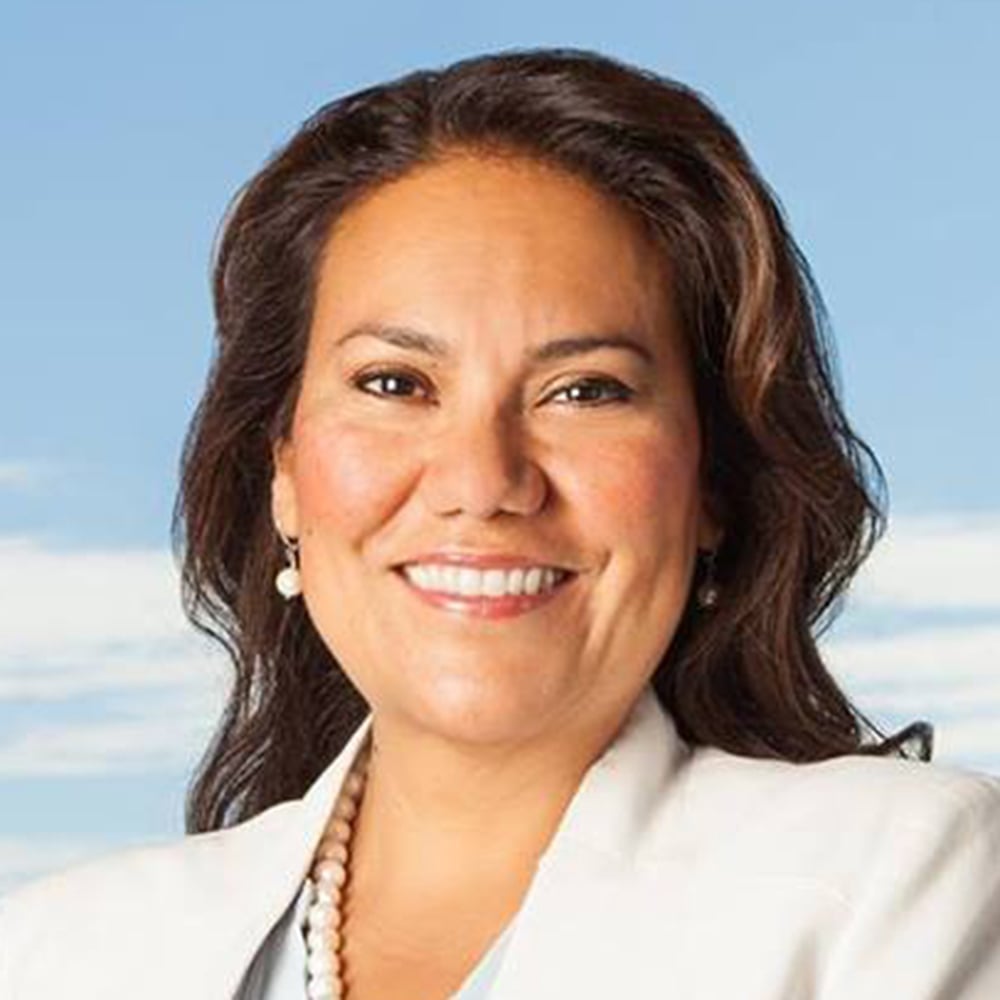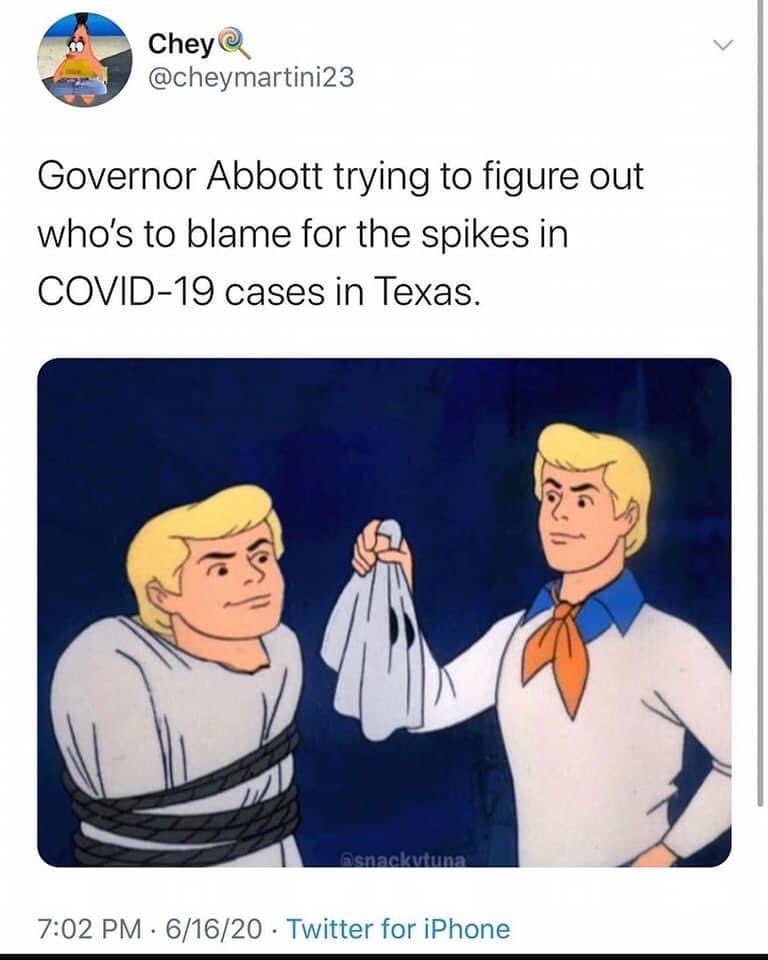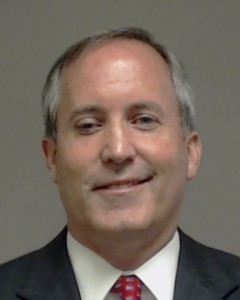Just some articles of interest, no real thread.
Climate Change Helped Fuel Heavy Rains That Led to Devastating Texas Flood
Climate scientists said the torrential downpours on July 4 exemplify the devastating outcomes of weather intensified by a warming atmosphere. These disasters, they said, will become more frequent as people around the world continue to burn fossil fuels and heat the planet.
“This is not a one-off anymore,” said Claudia Benitez-Nelson, a climate scientist at the University of South Carolina. Extreme rainfall events are increasing across the U.S. as temperatures rise, she said.
Warmer temperatures allow for the atmosphere to hold more water vapor, producing heavier rainfalls, she and other climate scientists said. This coupled with old infrastructure and ineffective warning systems can be disastrous.
“It is an established fact that human-induced greenhouse gas emissions have led to an increased frequency and/or intensity of some weather and climate extremes since pre-industrial time, in particular for temperature extremes,” the United Nations’ Intergovernmental Panel on Climate Change reported in 2021. “At the global scale, the intensification of heavy precipitation will follow the rate of increase in the maximum amount of moisture that the atmosphere can hold as it warms about 7% per 1°C of global warming.”
The U.S. government’s fifth National Climate Assessment, released in November 2023, says that “the number of days with extreme precipitation will continue to increase as the climate warms” and that “these changes in precipitation patterns can lead to increased flood hazards, impacting infrastructure, ecosystems, and communities.”
Central Texas is infamous for its flash flooding and arid soil, hard-packed ground into which water does not easily infiltrate. So when rain hits the ground, it runs off the region’s hilly terrain and canyons and accumulates into creeks and rivers rapidly, overwhelming them, causing them to rise quickly.
The flash flooding wasn’t a result of a full-strength storm, Benitez-Nelson said, but a remnant of a tropical storm. “That, to me, is really sad and deeply alarming,” Benitez-Nelson said. “Climate change is turning ordinary weather into these disasters.”
Damp remnants of Tropical Storm Barry moved up from eastern Mexico as humid air also moved north from Mexico’s southwestern coast, stalling over Texas’ Hill Country. The warm air in both the low and high levels of the atmosphere is a recipe for intense rainfall, said John Nielsen-Gammon, the state’s appointed climatologist for more than 20 years.
He and his colleagues compiled a list of all the rainfall events in Texas that produced more than 20 inches of rain a few years ago. One common feature the climatologists found was when wind blew from south to north, or when moisture was brought northward from the tropics, he said. “That sets up the possibility of very heavy rainfall,” Nielsen-Gammon said. He concluded in a report last year that extreme rain in Texas could increase 10 percent by 2036.
None of that will be on the special session agenda, of course.
The Texas Flash Flood Is a Preview of the Chaos to Come
Climate change doesn’t chart a linear path where each day is warmer than the last. Rather, science suggests that we’re now in an age of discontinuity, with heat one day and hail the next and with more dramatic extremes. Across the planet, dry places are getting drier while wet places are getting wetter. The jet stream — the band of air that circulates through the Northern Hemisphere — is slowing to a near stall at times, weaving off its tracks, causing unprecedented events like polar vortexes drawing arctic air far south. Meanwhile the heat is sucking moisture from the drought-plagued plains of Kansas only to dump it over Spain, contributing to last year’s cataclysmic floods.
We saw something similar when Hurricane Harvey dumped as much as 60 inches of rain on parts of Texas in 2017 and when Hurricane Helene devastated North Carolina last year — and countless times in between. We witnessed it again in Texas this past weekend. Warmer oceans evaporate faster, and warmer air holds more water, transporting it in the form of humidity across the atmosphere, until it can’t hold it any longer and it falls. Meteorologists estimate that the atmosphere had reached its capacity for moisture before the storm struck.
The disaster comes during a week in which extreme heat and extreme weather have battered the planet. Parts of northern Spain and southern France are burning out of control, as are parts of California. In the past 72 hours, storms have torn the roofs off of five-story apartment buildings in Slovakia, while intense rainfall has turned streets into rivers in southern Italy. Same story in Lombok, Indonesia, where cars floated like buoys, and in eastern China, where an inland typhoon-like storm sent furniture blowing down the streets like so many sheafs of paper. Léon, Mexico, was battered by hail so thick on Monday it covered the city in white. And North Carolina is, again, enduring 10 inches of rainfall.
[…]
That the United States once again is reeling from familiar but alarming headlines and body counts should not be a surprise by now. According to the World Meteorological Organization, the number of extreme weather disasters has jumped fivefold worldwide over the past 50 years, and the number of deaths has nearly tripled. In the United States, which prefers to measure its losses in dollars, the damage from major storms was more than $180 billion last year, nearly 10 times the average annual toll during the 1980s, after accounting for inflation. These storms have now cost Americans nearly $3 trillion. Meanwhile, the number of annual major disasters has grown sevenfold. Fatalities in billion-dollar storms last year alone were nearly equal to the number of such deaths counted by the federal government in the 20 years between 1980 and 2000.
The most worrisome fact, though, may be that the warming of the planet has scarcely begun. Just as each step up on the Richter scale represents a massive increase in the force of an earthquake, the damage caused by the next 1 or 2 degrees Celsius of warming stands to be far greater than that caused by the 1.5 degrees we have so far endured. The world’s leading scientists, the United Nations panel on climate change and even many global energy experts warn that we face something akin to our last chance before it is too late to curtail a runaway crisis. It’s one reason our predictions and modeling capabilities are becoming an essential, lifesaving mechanism of national defense.
“No one could have seen this coming,” they said.
Greg Abbott’s Bizarre Postflood Football Analogy
In response to a question about who was to blame for the mistakes that led a disaster to become a massive tragedy, Abbott decried the term “blame” as “the word choice of losers” before going into his analogy. “Every football team makes mistakes,” Abbott declared into his microphone. “The losing teams are the ones that try to point out who’s to blame. The championship teams are the ones that say, ‘Don’t worry about it, man, we got this. We’re going to make sure that we go score again, that we’re going to win this game.’ ”
The statement attracted a lot of attention. It was, frankly, nonsensical on several levels. There are no “winners” in a devastating storm; suggesting that all of us asking that reporter’s question, including Texans who lost loved ones, are “losers” is wildly belligerent and tone-deaf. But also, Abbott seems to misunderstand how successful football teams operate.
Casting blame can be helpful or harmful after a team loses a game. If the person doing it is trying to deflect from their own mistakes and shortcomings by passing the buck to someone else, it’s harmful—it hurts morale, avoids accountability, and makes it harder to improve by refusing to acknowledge an individual’s mistakes in the first place. If it’s being done critically—say, by watching every play made during a film session to see what mistakes were made and by whom, which every football team, from the smallest high school operation to the most robust NFL club, does—then it’s the key to getting better.
Great football coaches do the same thing with their successes, looking for even the slightest opportunities to develop their players or their game plans for the future. Win or lose, they examine every detail in order to get better. When Davis exploded at his players, he was furious that they were failing to treat the situation with the seriousness he felt it deserved. You could play his rant in response to Abbott’s press conference, and you wouldn’t need to change a single word.
But this isn’t a game. Abbott, and the officials he’s deflecting blame from, are tasked with protecting lives. More than a hundred of our neighbors and loved ones have died. Even more than that remain missing. Many of those are children. Throughout the region, countless Texans are feeling the effects of the tragedy, either because they know someone among the lost or because they have personal connections to the place.
This is not the first time on Abbott’s watch that Texans have endured weather-related tragedies. We’ve boiled snow when the water was unsafe to drink; we’ve waited days for the power to come back on; we’ve been promised that next time, things would be different; and we’ve learned that when disaster strikes, we’re on our own.
Abbott could have met the moment. He could have displayed the kind of passionate intensity that coaches who actually have won championships do. He could have insisted that he’d be going through the choices of every individual and entity tasked with safeguarding the public to look at what they did wrong, what they did right, and how he could have made better decisions. He could have focused not on casting blame elsewhere, but on soberly seeking accountability at every level. He could have displayed the kind of leadership that Texans need in a moment of tragedy. He could even have kept the damn football analogy.
But then he wouldn’t be Greg Abbott. As you know, I work in cybersecurity. We care a lot about why security incidents occur, what went well and what went badly in our response to them, what we can learn from them so we can do better the next time, and so on. And we do this in an environment of not assigning blame but of taking responsibility. It works pretty well for us. Maybe Greg Abbott would do well to spend some time in an environment like that, because he sure isn’t fostering one around himself.
FEMA’s response to Texas flood slowed by Noem’s cost controls
As monstrous floodwaters surged across central Texas late last week, officials at the Federal Emergency Management Agency leapt into action, preparing to deploy critical search and rescue teams and life-saving resources, like they have in countless past disasters.
But almost instantly, FEMA ran into bureaucratic obstacles, four officials inside the agency told CNN.
As CNN has previously reported, Homeland Security Secretary Kristi Noem — whose department oversees FEMA — recently enacted a sweeping rule aimed at cutting spending: Every contract and grant over $100,000 now requires her personal sign-off before any funds can be released.
For FEMA, where disaster response costs routinely soar into the billions as the agency contracts with on-the-ground crews, officials say that threshold is essentially “pennies,” requiring sign-off for relatively small expenditures.
In essence, they say the order has stripped the agency of much of its autonomy at the very moment its help is needed most.
“We were operating under a clear set of guidance: lean forward, be prepared, anticipate what the state needs, and be ready to deliver it,” a longtime FEMA official told CNN. “That is not as clear of an intent for us at the moment.”
For example, as central Texas towns were submerged in rising waters, FEMA officials realized they couldn’t pre-position Urban Search and Rescue crews from a network of teams stationed regionally across the country.
In the past, FEMA would have swiftly staged these teams, which are specifically trained for situations including catastrophic floods, closer to a disaster zone in anticipation of urgent requests, multiple agency sources told CNN.
But even as Texas rescue crews raced to save lives, FEMA officials realized they needed Noem’s approval before sending those additional assets. Noem didn’t authorize FEMA’s deployment of Urban Search and Rescue teams until Monday, more than 72 hours after the flooding began, multiple sources told CNN.
Does Greg Abbott have a football coach analogy for this? Josh Marshall and Mother Jones have other examples of Noem making things worse. I dunno, maybe someone in a position of power could complain about this. Like Ted Cruz, maybe? [checks notes] OK, maybe not.
Kerrville mayor says he wasn’t aware of state resources that Gov. Abbott said were in place ahead of flooding
Kerrville’s mayor said he was unaware of any help sent by the state to his community ahead of the flood, a day after Gov. Greg Abbott said the state had “assets, resources and personnel” in place two days before a flood tore through the Hill Country.
“The state was aware that there was a possible serious flooding event days in advance and pre-positioned assets and resources and personnel,” Abbott said at a Tuesday press conference. “We originally pre-positioned those assets, personnel and resources on Wednesday. Then, when greater clarity was discerned on Wednesday, we moved them closer and made sure we had adequate supplies going into Friday. We were ready.”
The Texas Division of Emergency Management “activated” state emergency response resources across West Texas and the Hill Country on July 2, according to a TDEM press release. TDEM cited “heavy rainfall with the potential to cause flash flooding” and encouraged Texans to prepare for flooded roads and monitor weather forecasts.
The state agency listed a number of state agencies and Texas A&M services “available to support local flood response operations,” such as rescue boat teams, helicopters, and personnel to monitor road conditions.
Kerrville Mayor Joe Herring said during a press conference on Wednesday that he wasn’t aware of any resources or personnel sent to his area, although the TDEM had people in Kerrville after the floods struck his city.
“I haven’t seen the governor’s remarks … I don’t know what resources TDEM had in place at that time,” Herring said.
The National Weather Service sent out its first flash flood warning to residents at 1:14 a.m. Friday, about three hours and 21 minutes before they received the first reports of flooding along the Guadalupe River, which runs through Kerrville.
NWS officials said they communicated directly with local officials the night of the flood, but Herring said he wasn’t aware of the flooding until around 5:30 a.m. when the city manager called him. By that time, floodwaters were already meters high and parts of Highway 39 were flooded, limiting evacuation efforts.
I mean, it sure would be nice to have a better understanding of why Mayor Herring was unaware of what was happening at the time. Maybe the failures are all his, maybe this is evidence that the alerting system has shortcomings, maybe it’s at least partly the failure of the state’s emergency management processes. Maybe some of each, maybe other factors as well. Who knows? A Governor who cared about these things would sure want to find out.
“Disasters are a human choice”: Texas counties have little power to stop building in flood-prone areas
Camp Mystic, the private summer camp that now symbolizes the deadly Central Texas floods, sat on a tract of land known to be at high risk for a devastating flood.
Nearly 1.3 million Texas homes are similarly situated in parts of the state susceptible to dangerous floodwaters, according to a state estimate. A quarter of the state’s land carries some degree of severe flood risk, leaving an estimated 5 million Texans in possible jeopardy.
Yet, local governments — especially counties — have limited policy tools to regulate building in areas most prone to flooding. The state’s explosive growth, a yearning for inexpensive land, and a state far behind in planning for extreme weather compound the problem, experts said.
While cities can largely decide what is built within their limits, counties have no jurisdiction to implement comprehensive zoning rules that could limit people from living close to the water’s edge.
Camp Mystic and many of the other camps along the Guadalupe River in Kerr County, where the disaster’s wreckage has been concentrated, were far outside city limits and any regulatory authority of the Kerrville City Council.
Some guardrails exist when it comes to building on flood plains. For property owners in flood-prone areas to tap federal flood insurance, localities have to enact minimum building standards set by the federal government. And counties can use a limited supply of federal dollars to relocate residents out of flood zones. However, those programs have had mixed success. Other programs to fortify infrastructure are tied to federally required hazard mitigation plans, which most rural counties in Texas do not have on file.
Also not on the special session agenda. It’s not too late, you know. Maybe ditch some of the needless wingnut stuff to make it happen.
Once again, I will close on a positive note:
H-E-B, James Avery embrace their Kerrville roots with support for flood victims
Two of the state’s best-known brands, both born in Kerrville, are showing their support for Hill Country flood victims in a big way.
Grocery giant H-E-B started as a tiny family-owned store in Kerrville in 1905. H-E-B, a household name to most Texans and headquartered in San Antonio, now has 435 stores in Texas and Mexico.
Volunteers from H-E-B have been on the ground serving up meals, distributing gift cards, handing out bottled water and clean-up products, and pitching in with the clean-up themselves.
H-E-B and the H.E. Butt Foundation have also committed $5 million in funding to nonprofits providing aid and recovery support to communities most in need.
“For 120 years, the Butt family has proudly called Kerrville home,” said Howard Butt III, H-E-B CEO. “Our hearts ache for the children, families, and communities facing tremendous loss throughout Texas in the wake of these floods. Our Partners have big hearts, and we will continue to support our neighbors. H-E-B and our dedicated Partners are here to help.”
Two million dollars will be gifted to the Community Foundation of the Texas Hill Country to support its Kerr County Flood Relief Fund.
The fund backs rescue, relief, and recovery efforts and flood assistance to Hunt, Ingram, Kerrville, Center Point, and Comfort.
H-E-B is also supporting nonprofits that are providing direct support including the American Red Cross, Texas Search and Rescue (TEXSAR), and the Salvation Army.
[…]
What is now James Avery Artisan jewelry was started in 1954 by James Avery in his mothers-in-law’s garage in Kerrville, according to the company’s website. The self-taught jewelry-maker fell in love with Kerrville as he underwent training at Lackland Air Force to serve in the U.S. Army Air Corp.
Avery died in 2018, and his son Chris has served as CEO and chairs the company’s board.
The company’s manufacturing facility is based in Kerrville on property purchased by James Avery. It temporarily closed this week due to the flood. The company today has 1,000 associates and 30 retail stores and is selling its famous charms to raise money for flood victims.
The company took to social media to say that 100% of the proceeds from the sale of their “Deep in the Heart of Texas” charm would go directly to supporting victims of the flood and relief efforts in the Kerrville community and the surrounding areas.
Supporters responded, and over the next couple of days, the charm sold out.
“We’re humbled by the support you’ve shown our friends and family in the Texas Hill Country and surrounding areas. The Deep in the Heart of Texas Charm sold out faster than we could have imagined,” a company statement said.
“We’re now taking backorders and remain committed to donating proceeds from both the sterling silver and 14K gold charms ordered through August 4.”
There’s a reason people are fanatically loyal to HEB. Thanks to them and to James Avery for taking care of business at home.
















